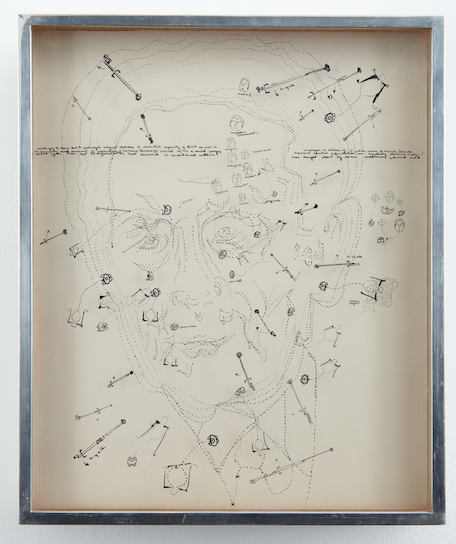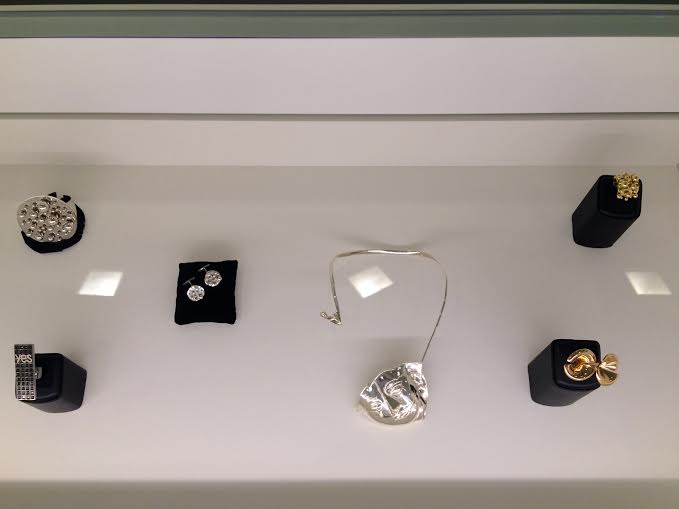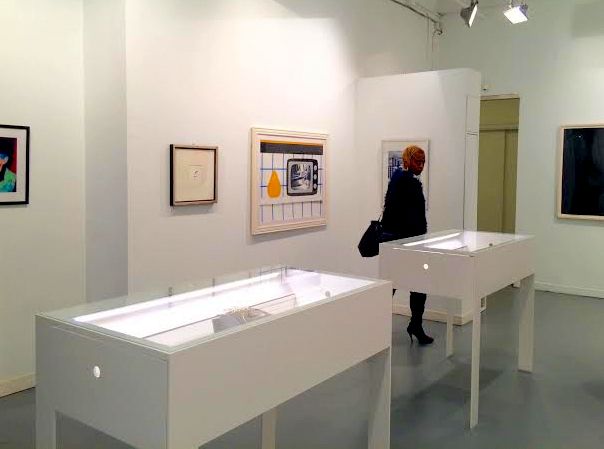Hidden amongst the glamour and grandeur of the buildings dominating 57th Street and 5th Avenue is the Ierimonti Gallery, an intimate space that is currently home to a small collection of artistic gems. On view from December 9th till January 30th are not one, but two exhibitions: Look Very Closely and Fusion: Prints and Jewels.
They say big things come in small packages. Look Very Closely acts as a testament to that statement. A handful of works by Marcel Duchamp and his student, Gianfranco Baruchello, hang from the whitewashed walls of one of the gallery’s showrooms. The miniature version of Duchamp’s infamous Nude Descending a Staircase No. 2 (1937), is displayed at the center of the room, immediately seizing the visitor’s attention. As the title of the show suggests, the small scale of the works draws the viewer in, challenging her to take a close look at each object and absorb the impossibly minute details that could only have been completed by the hands of the most precise craftsman.

Chemical inducers in Marcel Duchamp’s Brain (1965) by Gianfranco Baruchello

Marcel Duchamp’s Nude descending a staircase no. 2 (1937)
“Baruchello is a cultured artist with an artistic process that is anything but indifferent,” Carla Piscitelli, Gallery Founder, told La VOCE at the exhibitions opening reception. In fact, from a distance, and to the untrained eye Baruchello’s mixed media works may seem like compilations of miniature sketches that were haphazardly etched onto plexiglass or an aluminum sheet, but a closer inspection reveals that the seemingly insignificant details of his artistic process are not only intentional, but crucial in the creation of an incredibly complex work.
For example, a close look at Baruchello’s work titled Chemical inducers in Marcel Duchamp’s Brain, reveal that the artist created Duchamp’s portrait by etching on five sheets of plexiglass and carefully layering one on top of the other. Individually, these sheets would not make sense, but together they form the features of Duchamp’s profile. “He creates these worlds that start from micro, and grow to the macro,” explained Piscitelli. Unsurprisingly, in mixed media works such as In diretta which incorporates a gold comb, Baruchello demonstrates his adoption of Duchamp’s practice of transforming everyday objects into works of art.
 Baruchello’s works are like treasure troves; the eye easily gets lost in uncovering the layers of infinite detail. A different type of treasure is on view in the gallery’s second exhibition, Fusion: Prints and Jewels. Graphic prints by some of the most profilic post-modern artists including Andy Warhol, Roy Lichtenstein, and Bruce Nauman hang on the walls surrounding two glass vitrines. In them sits a stunning collection of jewels. International renowned artists such as Yoko Ono, Arman Arman, and Fausto Melotti, collaborated with Marylart to design and manufacture these wearable sculptures. By creating art in the form of rings, cuff links, and necklaces, it becomes a part of people’s everyday lives.
Baruchello’s works are like treasure troves; the eye easily gets lost in uncovering the layers of infinite detail. A different type of treasure is on view in the gallery’s second exhibition, Fusion: Prints and Jewels. Graphic prints by some of the most profilic post-modern artists including Andy Warhol, Roy Lichtenstein, and Bruce Nauman hang on the walls surrounding two glass vitrines. In them sits a stunning collection of jewels. International renowned artists such as Yoko Ono, Arman Arman, and Fausto Melotti, collaborated with Marylart to design and manufacture these wearable sculptures. By creating art in the form of rings, cuff links, and necklaces, it becomes a part of people’s everyday lives.
When asked why she decided to present these shows in particular Piscitelli responded, “First and foremost, where there is skill, you present it. You give the public an opportunity to also experience that artist’s talent.”












